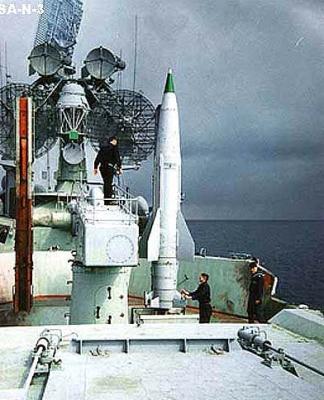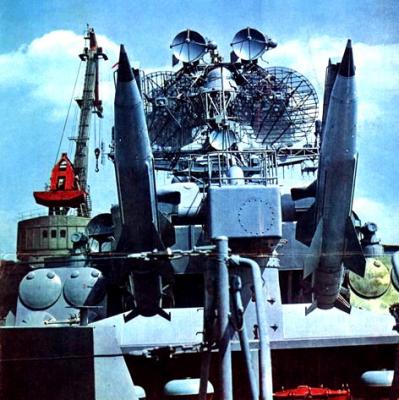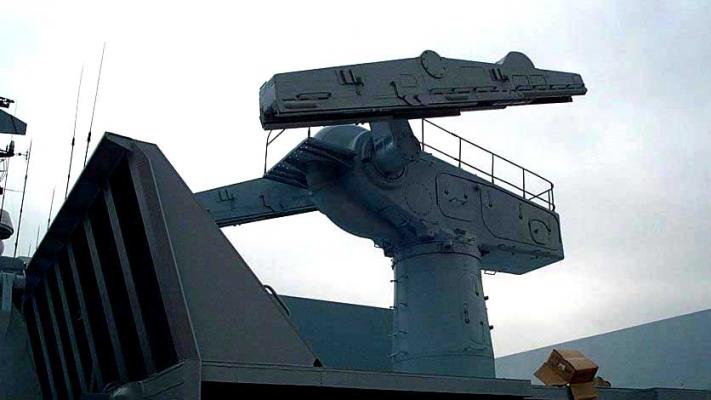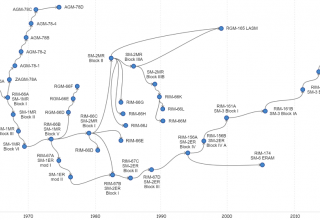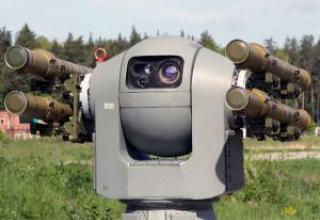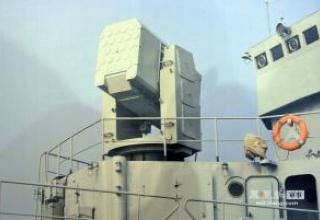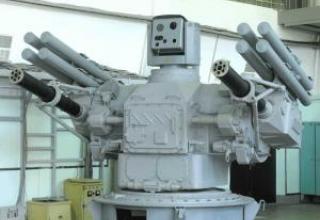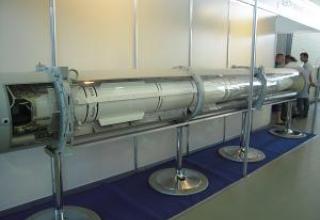The M-11 universal shipbuilding complex was developed under Resolution SM № 846-382 of 25.07.1959. The head of the system as a whole was appointed Research Institute-10 SCRE, Chief Designer G.N.Volgin. The CKB-34 was in charge of the launchers.
Originally, the M-11 complex with the SM-102 launcher was intended for ships on the Ave. 1126. But works on this project were terminated by the Resolution of CM No. 565-236 of 21.06.1961, in this connection works on M-11 complex were also terminated. However, as early as 27.07.1961, Resolution of CM No. 846-382 on continuation of works on M-11 was issued, but already for the ship of Ave. 1123.
In April 1962 the Research Institute-10 finished the conceptual design of the ZUR complex M-11 and handed it over to the customer. In the course of development of the conceptual design it was found out that it was impossible to build the SU M-11 on the basis of the M-1 complex due to the requirement of universality (for surface ships), doubling the range and interference immunity.
In May 1962, after the completion of the conceptual design 0KB-2 fundamentally changed the aerodynamic scheme and dimensions of the missile B-611, which required a complete processing of PU SM-136, control loop, etc.
The new conceptual design was approved only in 1963.
In September-October 1967, two M-11 serial complexes were successfully delivered to the head anti-submarine cruiser "Moscow" pr 1123. The M-11 complex with the B-611 missile was adopted for service in 1969 and was named "Storm". Later it was armed with the ships at 1123 Ave. The M-11 complex with the B-611 missile was adopted for service in 1969 and was named "Storm". Later it was armed with the ships of Pr. 1134A, 1134B and 1143.
By the end of 80s "Storm" SAM system was given a pseudonym "Shkval". In the West the complex received the designation SA-N-3 "Goblet" (Кубок).
Composition:

Anti-aircraft missile B-611 (4K60), developed at the Design Bureau "Fakel", single-stage, solid fuel. The shrapnel-flag warhead is equipped with a non-contact fuse. The missile's permissible missiles are 40 m (i.e. the maximum distance at which the target will be hit with the required probability). Prefabricated fragments of high-strength steel are used in the warhead as striking elements. The missiles are delivered to the ships in the equipped state, ready to be launched and do not require any checks during the whole period of storage on the ship.
"Thunder" fire control system has two radar channels of self-direction of one target, working to increase noise immunity in different wavelength ranges and using monopulse direction finding method. Two radar channels for telecontrol of two missiles also operate at different frequencies. This ensures that two target and two missile channels cannot be suppressed simultaneously by high power single sighting and sliding noise interference.
An air or surface target received along target designation lines is continuously accompanied by a dual channel Thunder control system at signals reflected from the target. According to the escort data, the AP guidance angles and coordinates of the pre-determined point of encounter of the missile with the target are generated. After the launch of each missile on board the command line transmits pulses of request, to which the responder of the missile's on-board equipment gives answers, signals, which are continuously accompanied by them and the development of guidance commands for two missiles on one target.
The complex has the original design of the antenna post control system. The two lower grating parabolic antennas of target tracking are mounted on the front surface of large box-shaped containers, which contain radio electronic equipment of target and missile channels. The top two missile escort antennas are mounted on top of the containers, and between them there is a horn antenna for command transmission. In recent modifications, the horn antenna has been replaced by a parabolic antenna and is placed between the target antennas.
The launcher with a storage, feed and charging device was developed by the CKB-34 together with the Bolshevik plant, so the PU initially had the SM (CKB-34) and then B ("Bolshevik") indices.
The M-11 PU complex was produced in three versions.
Two B-189 PU with two levels of storage, feeding and charging devices were installed on the cruiser Pr.1123. On each tier there are 4 drums of 6 missiles in each.
Storage, supply and charging device PU B-187 ships pr.1134A single tier and similar to the upper tier storage, supply and charging devices of the 1st version.
On large anti-submarine ships pr.1134B two PU B-187A with single deck storage devices in conveyor version are installed.
Characteristics:
| Maximum rocket speed, m/s | 1200 |
| Average missile flight speed in the kill zone, m/s | 650-800 |
| Start weight , kg | 1844 |
| Weight of shrapnel-flagged combat unit, kg | 120 |
| Range, km | 55 |
| The length of the rocket, mm | 6100 |
| The diameter of the rocket body, mm | 600 |
| Wingspan, mm | 1400 |
Testing:
The complex was not exported and did not participate in hostilities.
In 1972 the complex underwent modernization, the task of which was to reduce the lower boundary of the kill zone and provide the possibility of firing at maneuvering targets and inhalation. After modernization the complex was named "Storm-M" and in the same year it was adopted for service. On Apr. 1134A and 1134B the "Grom-M" control system served not only the SAM system, but also the "Blizzard" anti-submarine system.
In 1980-1986, the system was upgraded to fire low-altitude anti-ship missiles. The SAM system was named "Storm-N" and the missile was named B-611M (4K65).
Sources:
- Вестник ПВО
- Техника и Оружие №5, 1996
- А.В.Карпенко "Российское ракетное оружие 1943-1993". Санкт-Петербург,ПИКА, 1993
- Петров А. М., Асеев Д. А., Васильев Е. М. и др. "Оружие российского флота 1696-1996 гг."; СПб: Судостроение
